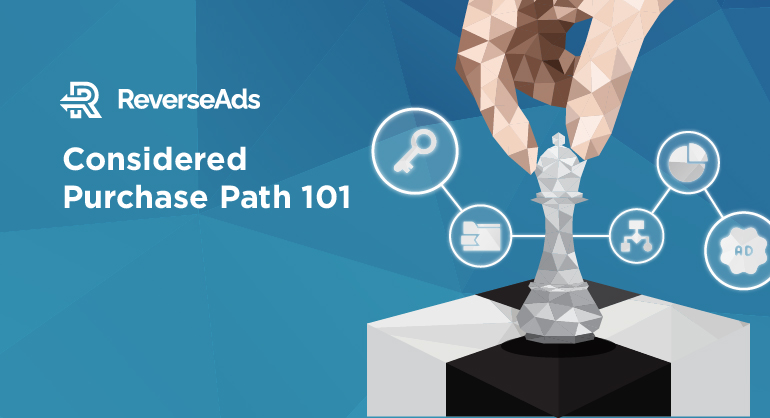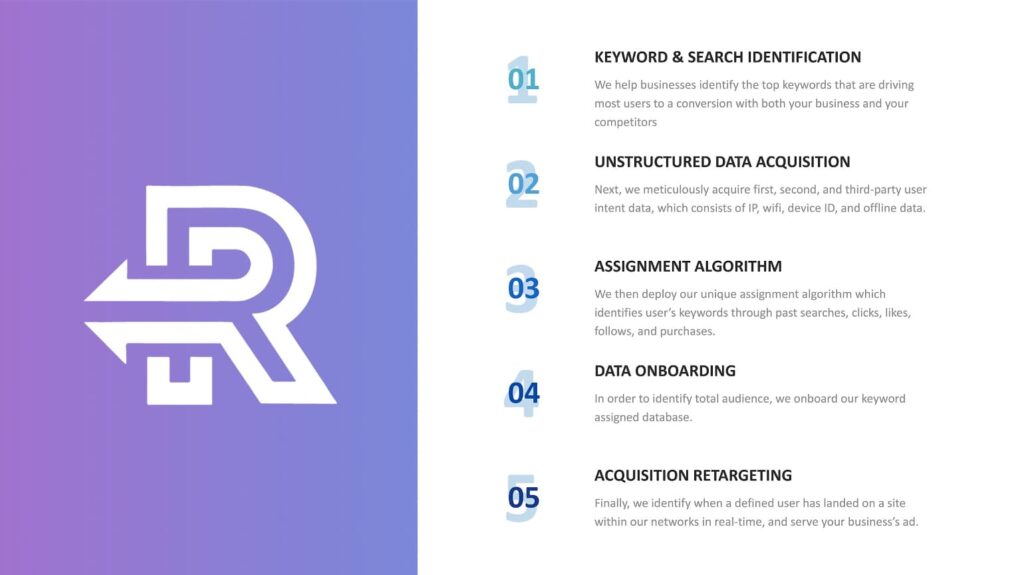Considered Purchase Path 101

Don’t feel like reading? Listen to this blog instead
The purchase path that your customer takes to arrive at a decision should transform your brand’s approach to advertising. While no two paths to purchase are identical, there are simple ways to determine which path your customer is on… considered or impulse. Considered purchase path (CPP) brands must remain conscious of how complex their buyer’s journey has become and adopt solutions that account for this complexity.
CPP brands that can accurately map their customer’s path to purchase ultimately run more influential advertising campaigns and inspire a greater number of conversions. CPP consumers understand that they have options and that the internet serves as a gateway to turn their purchasing dreams into reality. Appealing to these consumers requires a multichannel approach that uses keyword data to plant seeds at a variety of touchpoints. This approach recognizes where a consumer is heading and when they are most receptive to advertising.
The Primary Two Paths-to-Purchase
While almost every purchase decision can be broken down into three primary stages (awareness, consideration, and decision), a trend has emerged that divides the type of purchase path into one of two categories: impulse or considered.
The impulse purchase path is brief, and decisions made there receive less scrutiny and deliberation. These decisions are defined as events in which “a consumer experiences a sudden, often powerful and persistent urge to buy something immediately.” Perhaps the host of a house party sees a new brand of chips at the grocery store they would like to try or realize they need charcoal for their BBQ. These decisions are made rapidly, in the heat of the moment, which is why 8 out of 10 impulse buys are carried out in a brick and mortar store.
A considered purchase is the exact opposite. These decisions receive rigorous amounts of consideration, as consumers research for extended periods. The considered purchase path consists of multiple product comparisons, reading reviews, and the consumption of content related to the product. Products in this path often come with a higher price tag and are expected to have a lifespan of many years. Consumers on a CPP spend an average of 79 days researching before making a decision.
Is Your Brand CPP?
Determining whether your brand is CPP simply requires a complexity/consequence analysis of your customer’s purchase decisions. When a consumer decides to purchase a soft drink or buy a pair of socks, the decision is rather simple and comes with no lasting consequences. On the other hand, when a customer is seeking a new car or computer, the path-to-purchase becomes much more complex and consequences become more significant.
This visualization begins to illustrate the spectrum in which purchase decisions exist, and how complexity and consequence hold the key to unlocking the purchase path that your brand occupies. Automotive, real estate, banking, insurance, technology, Saas, and home appliances, are just some of the CPP verticals. As a brand, if your products or services lead to lasting financial or emotional consequences, then you are operating within a CPP industry.
Complex Buyer’s Journey & Media Consumption
Operating a business on a CPP requires an understanding of the increasingly complex buyer’s journey and how this impacts a potential customer’s actions before they make a purchase decision. As the complexity of the buyer’s journey increases, more media related to the purchase is consumed. If Jane wants to buy a new car, she might start by searching google for “the best family cars”, however, this Google search is only the beginning. It catapults her into a long winding road full of more searches, reviews, social media engagement, videos, podcasts, product comparisons, and ultimately a purchase decision.
This complex process empowers consumers as they seek as much information as possible to inform their decision and feel great about their purchase. The average adult in the U.S. consumes over 12 hours of media a day. When a purchase decision is being considered, these hours spent consuming media destroy the concept of a traditional sales funnel, as consumers’ expectations have changed. For CPP brands, advertising strategies must be reevaluated to account for all of the media being consumed along the buyer’s journey.
Consumers have more choices than ever, which manifests in the form of multiple touchpoints. These touchpoints are opportunities for brands to make an impression and inspire conversions. Each unique piece of media consumed, each product review, and each instance of social media engagement offers brands the chance to optimize advertising tactics and generate a resonant and durable touchpoint with the consumer on their considered path to purchase.
Strategies that Address CPP Issues
As soon as brands recognize that they are CPP, and their customer’s journey to conversion is complex, an aha moment occurs. This comes in the form of a realization that new advertising strategies must be considered to address complex consumer behavior. Most CPP brands have dabbled in search ads, perhaps with some degree of success. However, CPP companies are most likely to operate within highly competitive industries that offer high price products or services such as automotive, B2B, legal, insurance, and real estate. Many brands within these industries who have utilized search ads through Google are taken aback by how costly certain keywords are and how these search ads do not always result in clear ROI.
This is because attracting CPP customers on a non-linear purchase path with search ads that are linear in nature is like jumping rope with an iron rod. Appealing to customers in considered purchase paths requires a predictive, nimble, and data-driven solution to keyword advertising. CPP consumers exist beyond the search engine and are making stops all over the web. Every stop offers value to companies that want to serve optimized ads.
This value is actualized by companies like ReverseAds, who have reverse engineered the search ad process by using keywords to follow consumers to each stop along the complex buyer’s journey. Keyword data is being used by ReverseAds to determine where potential customers are consuming media. We then gauge their purchase intent and use predictive intelligence to anticipate their next several touchpoints to serve them ads and shepherd them into a conversion.
ReverseAds travel beyond the search engine, which addresses the challenges that CPP consumers present. While Search ads only serve advertisements in the exact moment that a consumer searches using a specific keyword, ReverseAds uses a reservoir of keywords to pinpoint consumers with the most purchase intent and serve them ads at each stop on the buyer’s journey. These ads are served for days, weeks, or even months. This is why ReverseAds outperforms Google in considered purchases.
Why ReverseAds
Media buyers are seeking solutions that outperform traditional search in considered purchase paths for their clients, and ReverseAds achieves this at a fraction of the cost. We empower brands to be where search results can’t be – delivering a 360° presence throughout the entire non-linear buyer’s journey. The ReverseAds cookieless solution protects customer privacy while meeting the demands (and behaviors) of consumers across purchase path industries who expect information and presence throughout their entire considered purchase roadmap.
The ReverseAds solution can be broken down into five essential steps:

If you’d like to learn how you can outperform search in considered purchase paths, visit https://www.reverseads.com/or email us at info@reverseads.com to schedule a time to speak with a ReverseAds Data Intelligence Specialist.





